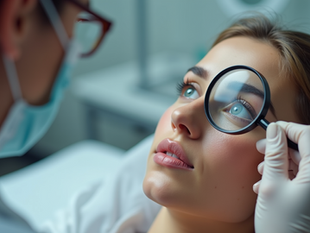
Understanding the Causes of Hair Thinning and Baldness
Jun 7
4 min read
0
11
0
Hair thinning and baldness can be distressing conditions that affect many individuals, regardless of age or gender. Understanding the underlying causes can empower you to take action. This blog post explores the various factors contributing to hair thinning and baldness, providing insights that may help you tackle these issues effectively.
What is Hair Thinning?
Hair thinning is characterized by a gradual reduction in hair density, often leading to bald spots or a wider appearance of the scalp. This process can be subtle and may go unnoticed at first. However, it can have significant emotional and psychological effects on individuals.
Common Causes of Hair Thinning
Several factors contribute to hair thinning. Genetics play a major role. For instance, hereditary hair loss, known as androgenetic alopecia, can affect both men and women. Studies show that approximately 70% of men and 40% of women experience some degree of hair loss due to genetic predisposition.

Hormonal changes are another significant cause. Conditions like pregnancy, menopause, or thyroid disorders can impact hormone levels, leading to hair loss. For example, around 50% of women experience hair thinning during menopause due to a decrease in estrogen.
Lifestyle Factors
Aside from genetics and hormones, lifestyle choices can also influence hair health. Poor nutrition is one of the many factors to consider. A diet low in essential vitamins and minerals, particularly iron, zinc, and biotin, can hinder hair growth. For example, one study indicated that a lack of iron in women led to a 30% increase in hair thinning.
Additionally, excessive heat styling and chemical treatments can damage the hair shaft and lead to thinning. If you regularly use heating tools or undergo chemical processes, this could be a significant contributor to your hair loss.

Stress is another enemy of healthy hair. Periods of high stress can trigger telogen effluvium, a condition where hair sheds prematurely. It is estimated that nearly 70% of individuals undergoing high-stress situations can experience noticeable hair thinning months later.
Medical Conditions That Affect Hair
Various medical conditions can also lead to hair thinning. Alopecia areata is an autoimmune disorder that can cause patchy baldness. This condition occurs when the immune system mistakenly attacks hair follicles, resulting in unpredictable hair loss.
Another condition to consider is hypothyroidism. When the thyroid gland is underactive, it can slow down metabolism and lead to hair thinning. Research indicates that patients with hypothyroidism often report hair loss, prompting healthcare providers to evaluate thyroid function when assessing hair health.
Scalp Health and Its Impact on Hair
The scalp’s health is equally important when it comes to hair growth. Scalp conditions such as dandruff or psoriasis can cause inflammation and hinder hair growth. Keeping the scalp clean and free from excessive oil is essential for maintaining a healthy environment for hair follicles.
Regularly using gentle shampoos and conditioners that cater to your scalp type can help maintain scalp health. Moreover, protecting your scalp from harmful UV rays is key. If you plan to spend extended time outdoors, applying a hat or sunscreen designed for the scalp can be beneficial.

Prevention and Solutions
While understanding the causes of hair thinning and baldness is essential, knowing how to prevent or address these issues is equally important. Here are some actionable recommendations:
Maintain a Balanced Diet: Ensure your diet is rich in fruits, vegetables, whole grains, and proteins. Including foods high in omega-3 fatty acids, such as salmon and flaxseeds, can support hair health.
Stay Hydrated: Drink plenty of water throughout the day. Keeping the body hydrated is crucial for promoting healthy hair growth.
Limit Heat and Chemicals: Try to minimize the use of heat styling tools. When necessary, use a heat protectant to avoid damaging your hair. Consider trying natural hair care methods, such as air-drying.
Manage Stress Levels: Incorporate stress management techniques into your routine. Activities like yoga, meditation, or regular exercise can help maintain your mental health, ultimately benefiting your hair.
Consult a Professional: If hair loss persists or worsens, consider seeking professional guidance. There are various hair loss treatments available, and a healthcare provider can help determine the best course of action for your specific situation.
When to Seek Professional Help
If you notice significantly increased hair thinning or baldness that affects your self-esteem, it may be time to consult a dermatologist or a trichologist. They can provide personalized solutions based on your unique circumstances. This can include medical treatments, lifestyle changes, or even surgical options depending on the severity of the hair loss.
Hair loss treatments like those provided at specialized clinics can help regenerate hair follicles or block DHT (dihydrotestosterone), a hormone linked to hair loss in genetically predisposed individuals.
The Future of Hair Restoration
The field of hair loss treatment is constantly evolving, with advances in technology and research. New methods, such as growth factor concentrate (GFC) therapy ais gaining popularity. These treatments can stimulate hair growth and improve overall hair health. If you are interested, investigating these options could offer you renewed hope.
In conclusion, understanding the causes of hair thinning and baldness can aid in recognizing and addressing personal concerns about hair health. Taking proactive steps to care for your hair and seeking professional assistance when needed can significantly improve your condition. Remember, maintaining healthy hair is not just about aesthetics; it also impacts overall confidence and well-being.




